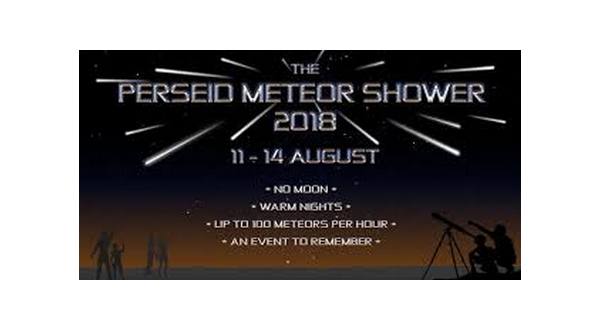
The new moon of August comes on Saturday this year, perfectly timed to bring dark, moonless nights around the peak of the Perseid meteor shower. Astronomers says 2018 is an excellent year to watch for these meteors; such moonless-sky conditions are ideal for observing the Perseids.Moreover, Earth should pass through the shower’s richest part around 8:00 Sunday evening.
Space.com skywatching columnist Joe Rao says late Sunday night into the predawn hours of Monday, viewers in North America and Europe should have the best seats in the house. Late-summer campers should put their sleeping bags outside the tent to enjoy this “Old Faithful” of meteor showers.
In an interview with KTLO, Classic Hits and The Boot news at the time of the annual Perseid event in 2017, local amateur astronomer Dr. James Clarke said historically this is one of the most spectacular showers when the weather is favorable and the moon is not bright.
Listen:
Clarke says meteor showers are named for the area of the sky from which they come or seem to come when looking in that direction.
Those that are lucky might catch sight of a few Perseids as early as 9:00 or 10:00 in the evening. These forerunners stand out from the meteors later in the night because they produce long, bright paths across the greater part of the sky.
Such meteors are called “Earth skimmers” and often leave long-lasting trains in their wake. Earth skimmers are very distinctive because they follow a path nearly parallel to our planet’s atmosphere, but during the evening hours, they tend to be few and far between.
But after the stroke of midnight, meteor activity begins to noticeably ramp up, because we’re on the forward-moving side of Earth and are ramming straight into the Perseid stream. Meteor activity also picks up around this time because the radiant is climbing higher in the sky; from midnight until the first light of dawn, meteors may appear at rates of 60 to 90 per hour, and this frequency is another reason this display is so popular.
About one-third of all Perseids leave luminous trains, which can persist from a few seconds to nearly a minute. Such outstandingly bright meteors are called fireballs. If you have binoculars, you can prolong a meteor train’s visibility.
If you’re clouded out of the peak viewing night, don’t worry; the Perseids will continue to be evident, in diminished numbers, for almost another two weeks. Hourly rates average about one-half to one-quarter of the peak numbers for a night or two before and after. And the very last stragglers have been noted as late as Aug. 24th.
WebReadyTM Powered by WireReady® NSI










